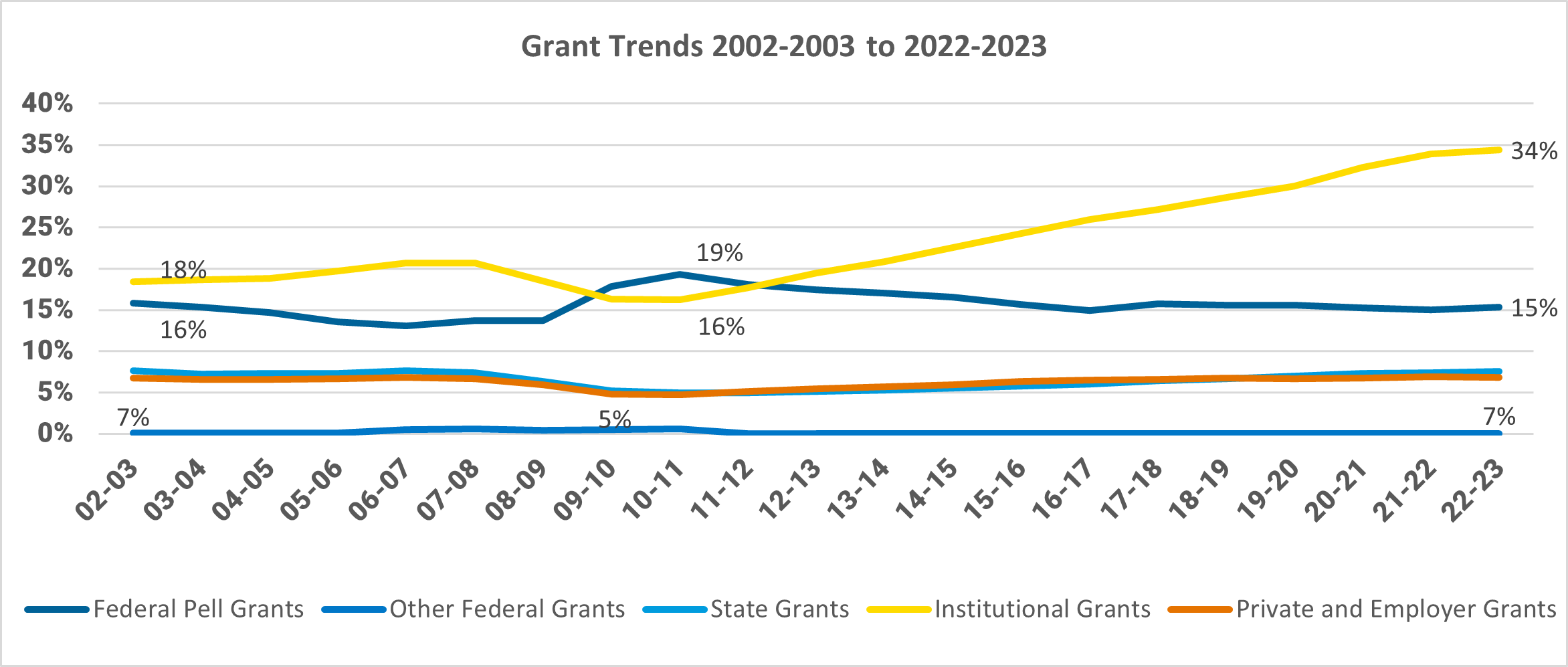Beyond Your Campus: Student Financial Aid’s Critical Role in Higher Education
May 1 is traditionally the day that millions of prospective college students make their final enrollment decision for the fall. However, the FAFSA delays have disrupted this year’s process. In a letter (.pdf/1.38 MB) sent by the American Council on Education to Secretary of Education Miguel Cardona, on March 28, 2024, 47% of the 350 surveyed institutions reported that they were considering adjusting their enrollment, financial aid, and or housing application deadlines because of the events surrounding the FAFSA.
To help put these disruptions into context: According to the College Board’s Trends in Student Aid 2023 report, for the 2022-23 academic year, an estimated 11.4M full-time undergraduates received $1.76B in financial aid, for an average of $15,475 per student. The primary sources of undergraduate financial aid packages are Grants at 64%, followed by Loans at 30%. The plurality of grants come from higher education institutions, at 32%, followed by Federal at 15%. State and Private and Employer grants comprise 7% and 6%.
Undergraduate Financial Aid Sources for the 2022-23 Academic Year
(Numbers are percentages)
* FSEOG: The Federal Supplemental Educational Opportunity Grant
Over the last 10 years, higher education institutions have accounted for an increasingly larger share of the financial aid grants provided to undergraduates. In 2002-03, institutional grants totaled $22 million. Twenty years later, institutional grants reached a dollar peak of $63.2 million for the 2020-21 academic year, an increase of more than 186%. As higher education institutions strive to meet their enrollment, diversity, and other goals, financial aid will continue to play a critical role in attracting and retaining students.

